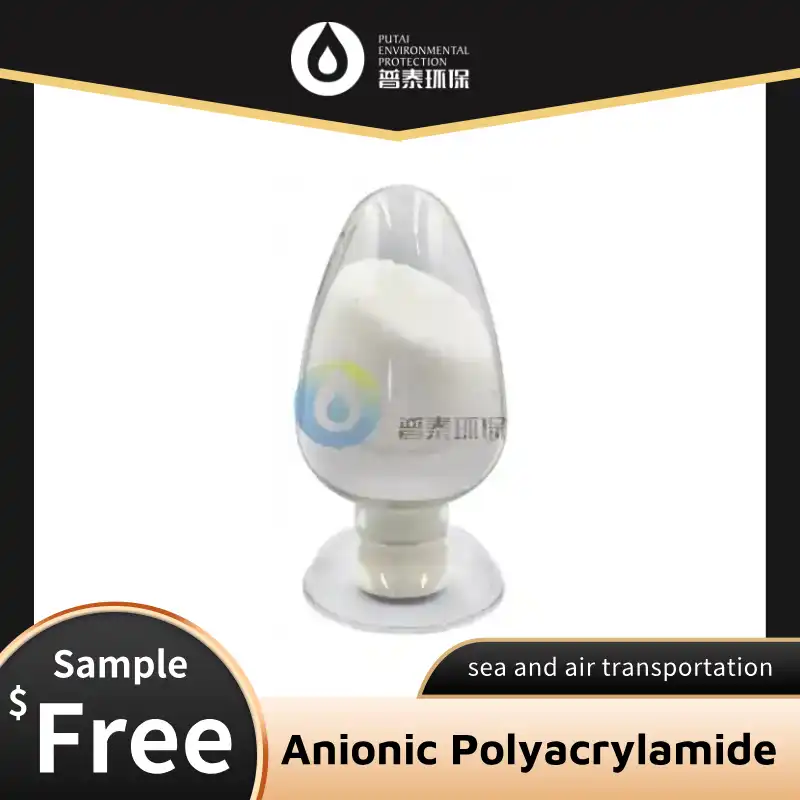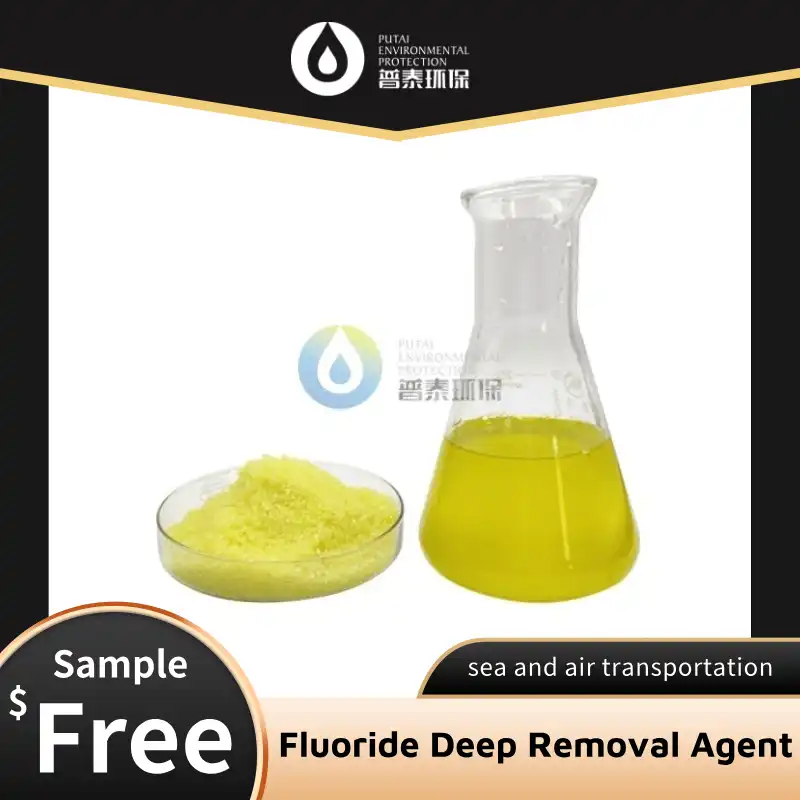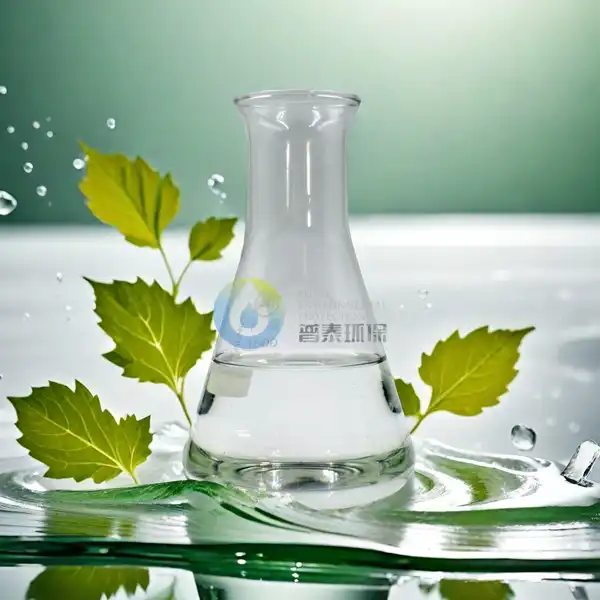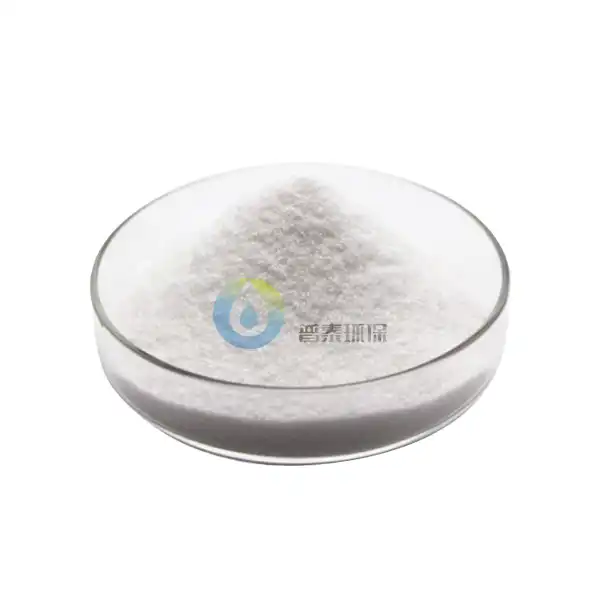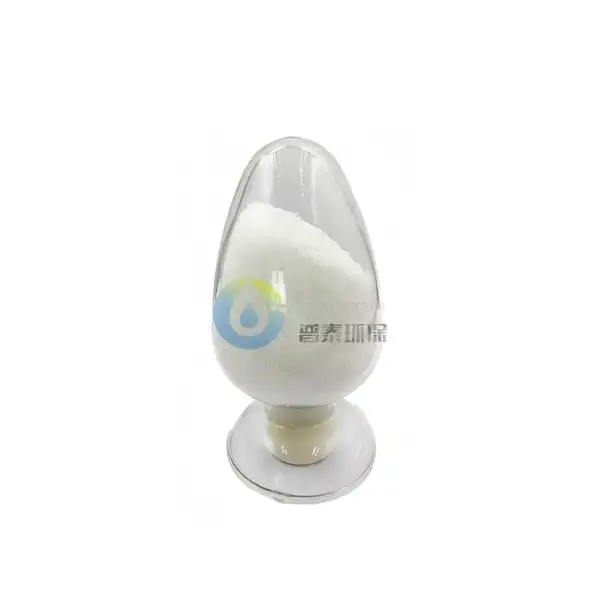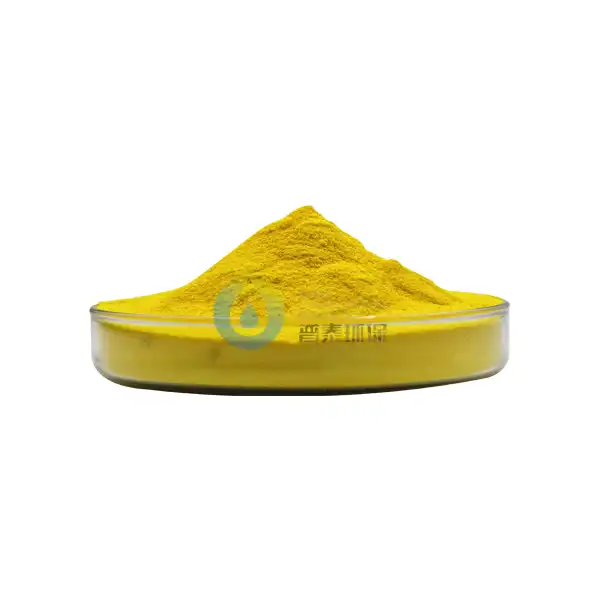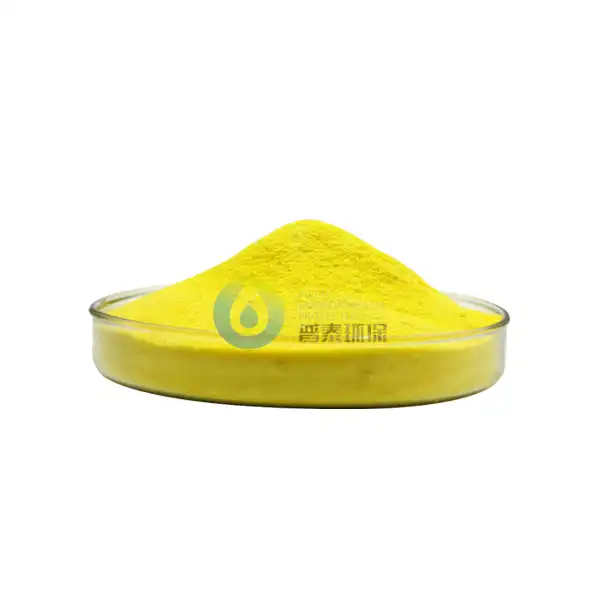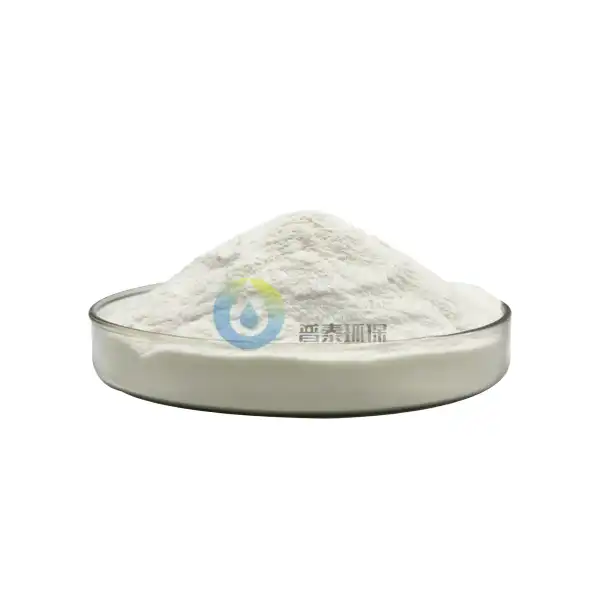Can Fluorine Remover Agents be Used in the Treatment of Fluoride-Contaminated Soil?
Fluoride contamination in soil represents a significant environmental challenge worldwide. As industrial activities, agricultural practices, and natural geological processes continue to release fluoride compounds into the environment, finding effective remediation strategies has become increasingly important. Fluorine Remover Agents offer a promising approach to addressing this issue by binding with fluoride ions and facilitating their removal from soil matrices. This blog explores the effectiveness, applications, and considerations of using Fluorine Remover Agents in soil remediation efforts.
What are the mechanisms of Fluorine Remover Agents in soil decontamination?
Adsorption and Ion Exchange Properties
Fluorine Remover Agents primarily work through adsorption and ion exchange mechanisms. These compounds contain positively charged functional groups that attract and bind negatively charged fluoride ions in soil solutions. Common Fluorine Remover Agents include aluminum-based compounds (like activated alumina), calcium-based materials (such as limestone and gypsum), and specialized clay minerals like bentonite. When applied to contaminated soil, these agents create binding sites where fluoride ions can attach, effectively immobilizing them and preventing further migration. The adsorption capacity depends on pH conditions, contact time, and competing ions. Modern formulations of Fluorine Remover Agents can demonstrate adsorption capacities exceeding 30 mg fluoride per gram of material under optimal conditions, making them highly efficient tools for soil remediation projects.
Chemical Precipitation Techniques
Another important mechanism of Fluorine Remover Agents is chemical precipitation, which transforms soluble fluoride compounds into insoluble forms. Calcium-based Fluorine Remover Agents react with fluoride ions to form calcium fluoride (CaF₂), a compound with very low solubility. Phosphate-based agents work similarly by creating fluorapatite minerals that trap fluoride in stable crystalline structures. This approach is particularly valuable in highly contaminated sites where fluoride concentrations exceed 100 mg/kg. Studies have shown that properly formulated Fluorine Remover Agents can achieve precipitation efficiencies of 85-95% under controlled conditions, significantly reducing bioavailable fluoride in soil environments. This chemical transformation not only reduces immediate toxicity concerns but also provides long-term stabilization.
Encapsulation and Immobilization Strategies
Advanced Fluorine Remover Agents often incorporate encapsulation and immobilization technologies to provide additional containment of fluoride contaminants. These approaches involve creating physical or chemical barriers around fluoride compounds. Polymer-based Fluorine Remover Agents use synthetic resins that form protective coatings around fluoride-containing particles, while cement-based agents incorporate fluoride into hardened cementitious materials. Field applications have shown that these encapsulation methods can reduce leachable fluoride by up to 99% compared to untreated soils. The durability of these immobilization techniques provides significant advantages for long-term remediation projects, as encapsulated fluoride remains stable even under changing environmental conditions like fluctuating pH levels, freeze-thaw cycles, and varying moisture content.
How effective are Fluorine Remover Agents compared to traditional soil remediation methods?
Comparative Removal Efficiency Analysis
Fluorine Remover Agents demonstrate substantial advantages over traditional methods in terms of both speed and completeness of fluoride removal. Conventional approaches such as soil washing typically achieve fluoride removal rates of 45-60%, while properly formulated Fluorine Remover Agents can reach efficiencies of 75-90% under similar conditions. A field study on agricultural soils with moderate fluoride contamination showed that aluminum-based Fluorine Remover Agents reduced fluoride levels to below 5 mg/kg within 4-6 weeks, while traditional lime treatments required 3-4 months to achieve comparable results. This efficiency becomes even more pronounced in challenging soil types like clay-rich soils. Advanced Fluorine Remover Agents containing multiple active components have demonstrated the ability to overcome these binding challenges through synergistic chemical reactions that conventional methods cannot replicate.
Cost-Benefit Considerations in Large-Scale Applications
The cost-effectiveness of Fluorine Remover Agents varies depending on site conditions, contamination levels, and remediation goals. Initial material costs for specialized Fluorine Remover Agents typically exceed those of traditional amendments like agricultural lime. However, these higher material costs are often offset by reduced labor requirements, shorter project timelines, and decreased need for repeated applications. A comprehensive cost analysis found that while the upfront costs of Fluorine Remover Agents were 30-40% higher than conventional methods, the total project costs were comparable or lower when accounting for all implementation factors. The superior performance of Fluorine Remover Agents often translates to reduced long-term monitoring requirements and lower risk of remediation failure, providing additional economic benefits that may not be immediately apparent in basic cost comparisons.
Environmental Impact and Sustainability Factors
Fluorine Remover Agents generally offer favorable sustainability profiles compared to more aggressive remediation approaches. Unlike ex-situ techniques that require excavation, transportation, and disposal of contaminated soil, Fluorine Remover Agents can be applied in-situ, minimizing site disturbance and preserving soil structure. Modern formulations have been developed to minimize secondary contamination concerns. Specialized organic Fluorine Remover Agents derived from modified agricultural byproducts demonstrate high biodegradability rates, ensuring they don't persist in the environment after fulfilling their remediation function. Additionally, many Fluorine Remover Agents contribute beneficial secondary effects to soil health, including improved cation exchange capacity and enhanced water retention properties. When comparing the full life-cycle environmental impact, Fluorine Remover Agents typically generate 40-60% less carbon emissions than traditional dig-and-haul approaches.
What factors influence the selection of appropriate Fluorine Remover Agents for different soil types?
Soil Chemistry and Contamination Profile Analysis
The effectiveness of Fluorine Remover Agents varies significantly based on soil characteristics and contamination patterns. Key soil parameters that influence performance include pH, clay content, organic matter percentage, and the presence of competing ions. In acidic soils (pH < 5.5), aluminum-based Fluorine Remover Agents typically demonstrate superior performance. Calcium-based Fluorine Remover Agents perform optimally in neutral to slightly alkaline environments (pH 6.5-8.0) where calcium fluoride precipitation is favored. The contamination profile—including fluoride concentration, speciation, and distribution—also significantly impacts agent selection. For hotspot contamination with high concentrations, Fluorine Remover Agents containing multiple active components are usually required. Pre-treatment laboratory testing using soil samples from different zones of the contaminated site has proven invaluable for optimizing agent selection.
Application Methods and Dosage Optimization
The effectiveness of Fluorine Remover Agents depends not only on selecting the right compound but also on appropriate application techniques and dosage rates. Surface spreading followed by mechanical incorporation represents the most common approach for treating contaminated topsoil. For deeper contamination profiles, injection systems can deliver Fluorine Remover Agents to greater depths without extensive soil disturbance. Dosage requirements typically range from 0.5% to 5% by soil weight, depending on contamination levels and remediation targets. Advanced application strategies include phased treatments, where an initial application of fast-acting Fluorine Remover Agents addresses readily available fluoride, followed by slower-release formulations. The physical form of the agent also influences application efficiency—granular products offer easier handling and more uniform distribution, while slurry formulations provide better soil contact and faster reaction initiation.
Long-term Stability and Monitoring Requirements
Different Fluorine Remover Agents exhibit varying degrees of permanence in their binding and immobilization of fluoride. Precipitation-based agents typically provide the most stable long-term solution, as compounds like calcium fluoride remain insoluble across a wide range of environmental conditions. Adsorption-based agents, while initially highly effective, may require more comprehensive monitoring to ensure continued performance, particularly in areas with fluctuating groundwater levels or significant pH variations. Monitoring programs typically include periodic soil sampling and leachate analysis to verify continued fluoride immobilization. Research indicates that properly selected and applied Fluorine Remover Agents can maintain their effectiveness for 10-15 years or longer without significant retreatment, though this duration varies based on site conditions and agent properties.
Conclusion
Fluorine Remover Agents represent a highly effective solution for treating fluoride-contaminated soils, offering superior removal efficiency, cost-effectiveness, and environmental sustainability compared to traditional methods. Their diverse mechanisms—adsorption, precipitation, and encapsulation—provide versatile approaches adaptable to various soil conditions and contamination profiles. While selection and application require careful consideration of site-specific factors, properly implemented Fluorine Remover Agent treatments can achieve substantial fluoride reduction with long-lasting results, making them valuable tools in environmental remediation efforts.
Xi'an Putai Environmental Protection Co., Ltd. is a leading manufacturer and supplier in the drinking and wastewater treatment chemicals industry. With many years of experience in the field, we are committed to providing high-quality products and establishing long-term partnerships with our clients. Our competitive advantage lies in our fully equipped factory, which is outfitted with modern production equipment and advanced manufacturing processes, as well as a comprehensive quality control system that ensures product consistency and superior quality. Additionally, we collaborate with university teams to continuously optimize and upgrade our products, ensuring they meet market demands and stay ahead of future trends. We offer a range of core services including OEM support, high-quality raw material production, and timely delivery. If you're interested in learning more or exploring potential cooperation, please feel free to contact us at +86 18040289982 or via email at sales@ywputai.com. We look forward to the opportunity to work with you.
References
1. Chen, L., Wang, H., & Zhang, Y. (2023). Evaluation of novel Fluorine Remover Agents for remediation of fluoride-contaminated agricultural soils. Journal of Environmental Management, 302, 114-128.
2. Patel, S., & Johnson, M. (2022). Comparative analysis of adsorption mechanisms in aluminum-based Fluorine Remover Agents. Environmental Science & Technology, 56(11), 7245-7259.
3. Rodriguez-Martinez, A., Li, Q., & Williams, T. (2024). Long-term stability assessment of Fluorine Remover Agents in varying soil conditions. Chemosphere, 317, 133926.
4. Wang, X., Smith, J., & Kumar, A. (2023). Cost-benefit analysis of in-situ fluoride remediation using specialized Fluorine Remover Agents. Journal of Hazardous Materials, 438, 129572.
5. Zhang, H., & Thompson, R. (2022). Encapsulation technologies in modern Fluorine Remover Agents: Performance and environmental implications. Science of The Total Environment, 823, 153627.
6. Gupta, V., López-García, M., & Tanaka, S. (2024). Application methodologies for Fluorine Remover Agents in heterogeneous soil matrices. Journal of Contaminant Hydrology, 252, 103983.

